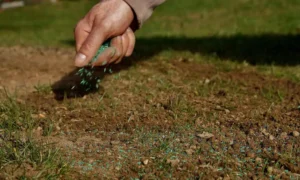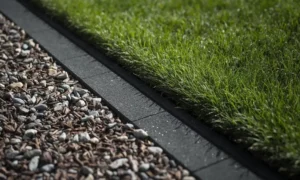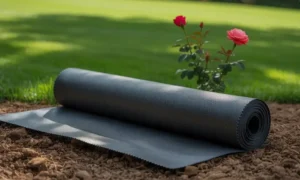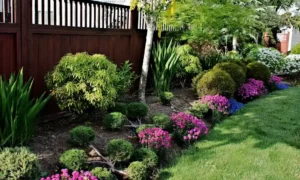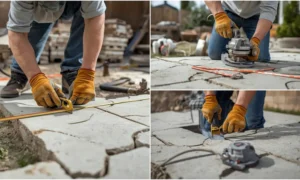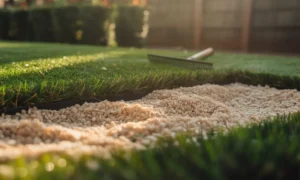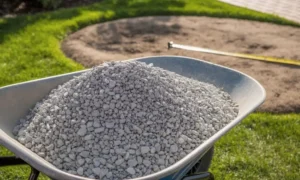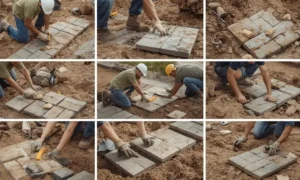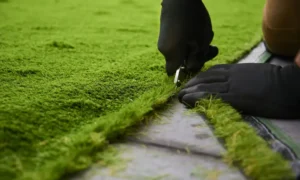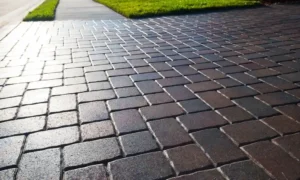Are concrete pavers good for patio projects? Choosing the right material is essential for creating a durable and attractive outdoor space. Homeowners often compare pavers or concrete to find the best balance of cost, style, and maintenance. Concrete patio pavers offer flexibility in design, are easy to repair, and provide better drainage than solid concrete slabs. They also come in various shapes, colors, and textures to match different aesthetics. When considering long-term value and visual appeal, many find that concrete patio pavers are a smart choice. So, are concrete pavers good for patio use? In many cases, they absolutely are.
What Are Concrete Pavers?
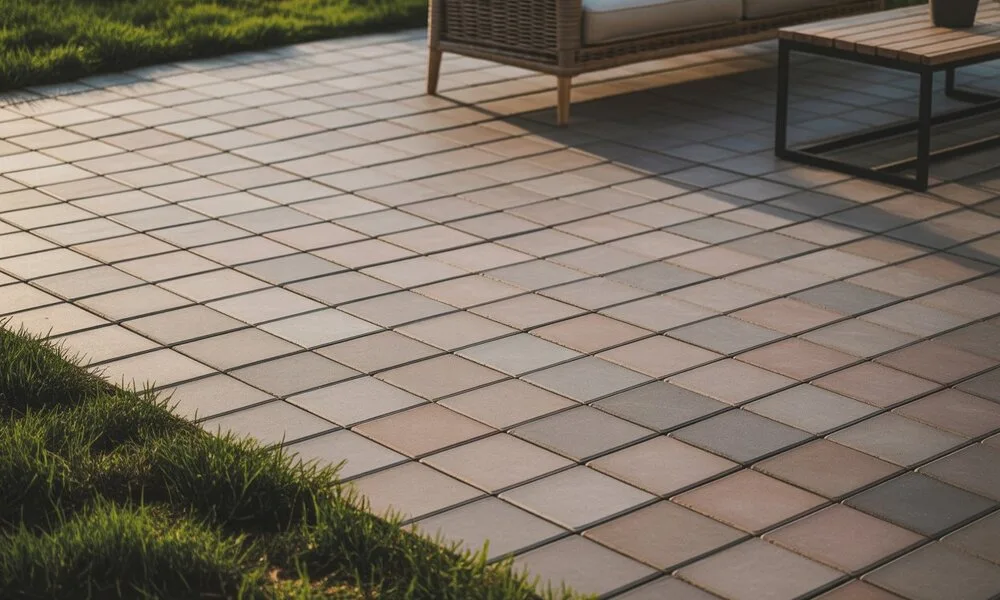
Concrete pavers are solid blocks made from a mixture of cement, sand, gravel, and water. These blocks are shaped into different sizes and styles, then allowed to cure until they are strong and ready to be used. Driveways, walks, patios, and other outdoor surfaces are frequently constructed with them.
When utilized in garden or backyard areas, concrete pavers are often referred to as concrete patio pavers.
Composition of Concrete Pavers
Concrete pavers are made by mixing:
- Cement – acts as the binder
- Sand – gives the mix structure
- Gravel or crushed stone – adds strength
- Water – activates the cement to harden the mix
Once the mixture is poured into molds, it is compacted and cured to become durable, weather-resistant blocks.
Difference Between Concrete Pavers and Poured Concrete
When deciding between pavers or concrete, it’s helpful to know how they differ:
Feature | Concrete Pavers | Poured Concrete |
Installation | Placed one by one on a sand base | Poured in one large slab |
Appearance | Many shapes, colors, and patterns | Mostly plain and flat |
Repair | Easy to replace single pavers | Cracks are harder to fix |
Durability | Better at handling freeze-thaw cycles | May crack over time |
Cost | Slightly more upfront | Lower cost to install initially |
Concrete patio pavers are usually chosen for their flexibility in design and ease of maintenance, while poured concrete is often selected for larger or more budget-friendly projects.
Common Uses and Applications
Concrete pavers are widely used in many outdoor areas, including:
- Patios – for stylish and durable outdoor living spaces
- Driveways – for a strong, attractive surface that can hold heavy vehicles
- Walkways and garden paths – for neat, clean paths around a yard
- Pool decks – because they don’t get as slippery as poured concrete
- Courtyards and plazas – for commercial and public spaces
Whether you’re choosing pavers or concrete, the decision depends on your design goals, budget, and how much maintenance you’re willing to do.
Types of Concrete Pavers
Concrete pavers come in several types, each with unique features and benefits. Choosing the right one depends on your project and personal style. The most popular varieties for outside areas like patios, walks, and driveways are listed below.
1. Interlocking Concrete Pavers
Interlocking concrete pavers are designed to fit together like puzzle pieces. They are very strong and durable, making them ideal for driveways, sidewalks, and patios. Their interlocking design keeps them from moving over time and helps them stay in place.
- Best for: Driveways, walkways, high-traffic areas
- Benefits: Long-lasting, easy to repair, great load-bearing strength
When comparing paving stones vs concrete, interlocking pavers often win in strength and ease of maintenance.
2. Architectural Slab Pavers
Architectural slab pavers are smoother and thinner than interlocking pavers. They are ideal for concrete patio pavers in homes or businesses because they provide a more contemporary and fashionable appearance.
- Best for: Patios, pool decks, and garden areas
- Benefits: Sleek design, available in many finishes, lightweight
However, they’re not recommended for heavy loads like driveways, as they’re less durable than interlocking types.
3. Permeable Concrete Pavers
Permeable concrete pavers are designed to allow water to pass through them, reducing runoff and helping the environment. They are a great option in areas with heavy rain or where drainage is a concern.
- Best for: Eco-friendly patios, driveways, and walkways
- Benefits: Helps prevent water pooling, supports drainage, eco-conscious design
Choosing permeable pavers can be a smart move when comparing paving stones vs concrete, especially in areas with strict stormwater regulations.
Color, Shape, and Texture Variations
Concrete pavers are available in a vast array of hues, forms, and textures. There is a style to fit your design, whether you choose a contemporary smooth surface or the appearance of natural stone.
- Colors: Gray, tan, red, charcoal, multi-tone blends
- Shapes: Square, rectangular, hexagonal, irregular stone shapes
- Textures: Smooth, tumbled, embossed, or cobblestone finishes
These design choices allow homeowners to create unique looks using concrete patio pavers that suit both traditional and modern outdoor spaces.
Installation Process for Concrete Pavers
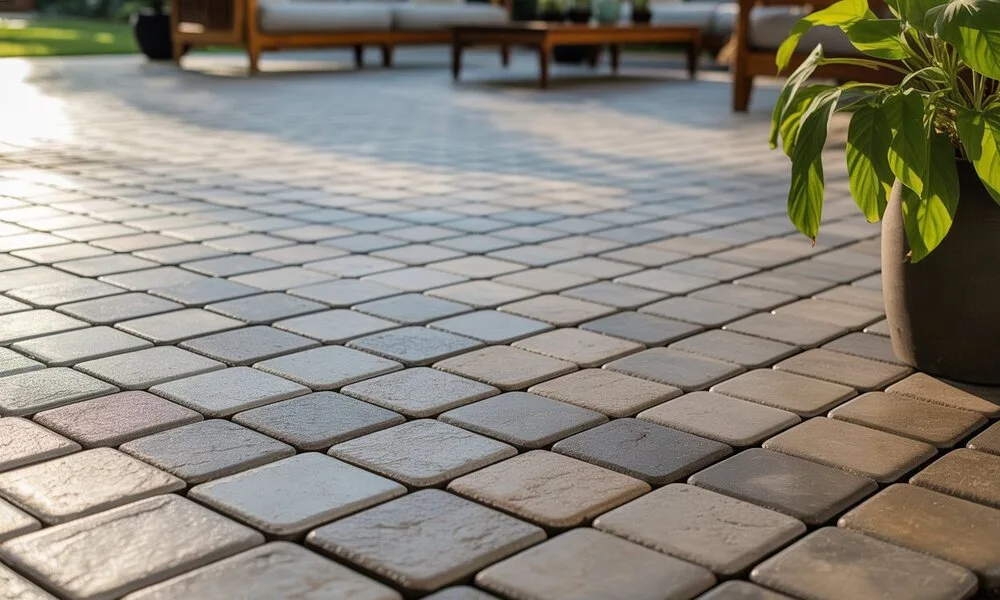
Installing concrete patio pavers involves several key steps to ensure a durable and long-lasting surface.
1. Site Preparation and Base Layer
- Clear the area of grass, dirt, and debris.
- Excavate to the proper depth (usually 6–8 inches).
- Add a compacted gravel base (about 4 inches) for stability.
2. Laying Patterns and Alignment
- Spread a 1-inch layer of sand over the base.
- Lay the paving stones in your chosen pattern (herringbone, basket weave, etc.).
- Keep edges straight and level as you go.
3. Sand Infill and Compaction
- After placing the pavers, fill in the joints with fine sand.
- Use a plate compactor to press the pavers into the sand bed and lock everything in place.
4. DIY vs. Professional Installation
- DIY is doable for small projects like patios or walkways.
- For large or load-bearing areas like driveways, professional installation ensures better durability and drainage.
Concrete Pavers Advantages
Concrete patio pavers are a popular choice for outdoor spaces because they offer many practical and visual benefits. Here’s why they’re a smart option:
1. Durability and Load-Bearing Capability
Concrete pavers are extremely strong and can handle heavy loads without cracking. That’s why they’re great for driveways, walkways, and high-traffic areas. Compared to plain concrete, pavers are less likely to break under pressure.
2. Aesthetic Versatility
They come in many shapes, colors, and textures, allowing for creative designs and patterns. Whether you prefer a classic brick look or a modern stone finish, concrete patio pavers can match any style.
3. Low Maintenance and Repairability
Pavers are easy to clean and maintain. If one gets damaged, you can simply replace that piece—no need to redo the whole surface like with poured concrete. This is a big win when comparing paving stones vs concrete.
4. Weather and Slip Resistance
Concrete pavers handle freeze-thaw cycles better than solid concrete slabs, which helps prevent cracks. Many pavers also have textured surfaces, reducing the risk of slipping when wet.
5. Eco-Friendly Options (Permeable Pavers)
Permeable concrete pavers allow water to flow through, helping with drainage and reducing runoff. This makes them an environmentally friendly option for green landscaping. For Landscape Design services in the Bay area contact no other than Lakota Design Group.
Comparing Concrete Pavers to Other Materials
When planning an outdoor surface like a patio, driveway, or walkway, it’s important to compare your options. Here’s how concrete pavers stack up against other popular materials.
1. Concrete Slab
- Cost: Usually cheaper upfront than pavers.
- Durability: Prone to cracking over time, especially in freezing weather.
- Maintenance: Hard to repair—cracks often require full slab replacement.
- Pavers vs concrete patio: While concrete slabs are budget-friendly, pavers offer better durability and easier repairs.
2. Natural Stone
- Aesthetics: Beautiful and unique, with a natural look.
- Price: Often the most expensive option.
- Installation: Heavy and more difficult to install properly.
- Paving stones vs concrete: Natural stone is more upscale, but concrete pavers give a similar look for a lower cost and easier setup.
3. Brick Pavers
- Color Longevity: Bricks hold color well over time.
- Cost: Usually more expensive than concrete pavers.
- Structure: Bricks are smaller and can chip or crack more easily.
- Pavers or concrete: Brick gives a classic look, but concrete patio pavers offer more style choices and better durability.
4. Gravel or Mulch
- Budget: Very affordable option for temporary or informal areas.
- Maintenance: Needs frequent raking, refilling, and weed control.
- Comfort: Less comfortable and stable to walk on.
Compared to pavers or concrete, gravel and mulch are cheaper but not ideal for long-term or heavy-use areas.
Final Verdict
Concrete pavers are a smart and stylish choice for patio use. They combine strength, design flexibility, and long-term value, making them one of the most popular materials for outdoor spaces. Whether you’re planning a cozy seating area or a large backyard transformation, pavers can meet both functional and aesthetic needs.
Pros and Cons
The main advantages of concrete pavers include their durability, easy repair process, wide range of styles, and resistance to weather and slipping. They’re also available in eco-friendly options, like permeable pavers that help with drainage. On the downside, concrete pavers can have a higher upfront cost compared to poured concrete and require proper base preparation for lasting results. However, when comparing pavers vs concrete patio, the long-term benefits often make pavers the better investment.
Best Use Cases
Concrete pavers are perfect for backyard patios, walkways, pool decks, and outdoor kitchens. They’re also suitable for driveways if interlocking types are used. If you’re weighing paving stones vs concrete, pavers offer more visual variety and better performance in most residential settings.
Homeowner Tips
If you’re considering pavers, start by choosing the right type for your space—architectural slab pavers for patios or interlocking ones for driveways. Plan your layout carefully, and be sure the ground is properly prepared before installation. While small patio projects can be done as a DIY, larger or more complex designs often benefit from professional help. The difference in quality is noticeable and worth the investment.
Need Help? Contact Us!
Still deciding between pavers or concrete? Let Lakota Design Group guide you through the process. Whether you need help with design, material selection, or full installation, we’re here to bring your outdoor vision to life. Contact us today for professional, high-quality patio solutions that last.
FAQs
Why Are Concrete Pavers A Good Choice For Patios?
Concrete pavers are durable, available in many colors and styles, easy to repair, and resistant to weather and slipping, making them ideal for patio surfaces.
How Do Concrete Pavers Compare To Poured Concrete For Patios?
Unlike poured concrete, pavers allow for easy repairs since individual stones can be replaced. They also offer more design flexibility and better drainage options.
Can Concrete Pavers Handle Heavy Outdoor Furniture And Foot Traffic?
Yes, concrete pavers are strong enough to support heavy furniture and frequent foot traffic without cracking.
Are Concrete Pavers Slippery When Wet?
Most concrete pavers have textured surfaces that provide good slip resistance, making them safer for patios, especially around pools.
How Long Do Concrete Pavers Last On A Patio?
With proper installation and maintenance, concrete pavers can last 20 to 30 years or more.
Are There Eco-Friendly Options For Concrete Pavers?
Yes, permeable concrete pavers allow water to drain through, reducing runoff and helping with environmental concerns.


